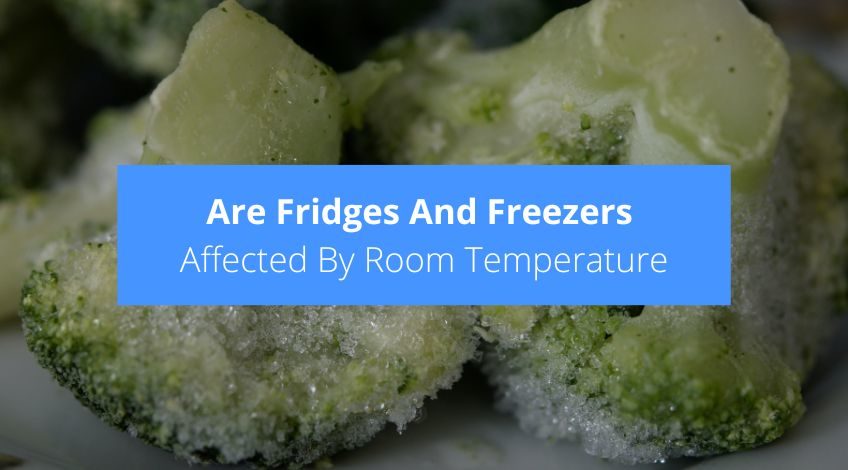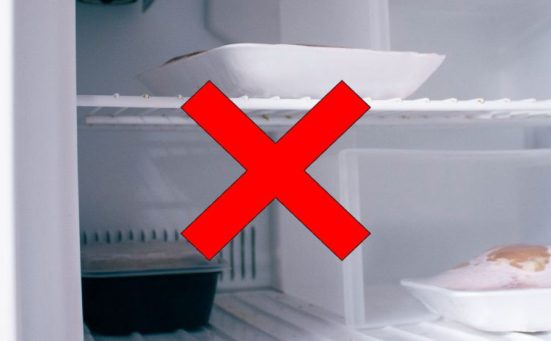
Are Fridges And Freezers Affected By Room Temperature?
In an average room, fridges and freezers can tolerate normal working temperatures quite well. In fact fridges and freezers made for the UK market specify a temperature range of between 10 C (50 F) to 32 C (90 F) and that’s quite an easy range to abide by, for most of the year. This range when applied to fridge freezers is called a climate class.
Climate Class For Fridge/Freezers
| Classification | Minimum Temperature | Maximum Temperature |
|---|---|---|
| SN (Subnormal) | 10 C (50 F) | 32 C (90 F) |
| N (Normal) | 16 C (61 F) | 32 C (90 F) |
| ST (Subtropical) | 16 C (61 F) | 38 C (100 F) |
| T (Tropical) | 16 C (61 F) | 43 C (109 F) |
Appliances sold in the UK will either be SN or N which means they will operate normally within the parameters set out in the relevant climate class.
Why Is The Climate Class Important?
The climate class ascribed to your fridge/freezer is important because it is the temperature range your fridge/freezer has been designed to operate in and give its best results. If you were to operate your fridge/freezer outside of its designated climate class, you might find;
- Your fridge/freezer will use more energy
- Your food will perish faster
- Your fridge/freezer is likely to break down
- Your fridge/freezer will have a decreased lifespan
- Your manufacturers warranty will be void
How To Find The Climate Class On Your Fridge/Freezer
The climate class for your fridge/freezer will be on the silver or white plate inside the fridge which also contains the model number, serial number etc. If you can’t locate it, consult your user manual and look for something like “room temperature” or “installation location”.
What Happens If The Fridge/Freezer Is Kept Outside Of Its Climate Class?

If you were to keep your fridge/freezer in temperatures outside of its climate class you would notice adverse effects occurring to your fridge/freezer. As it has been designed to work within those parameters, operating your fridge/freezer outside of those levels could have serious effects on not only the fridge/freezer itself, but also on the contents.
What Would Happen If The Room Was Too Hot?
If you have a fridge/freezer with a climate classification of Normal, and you kept it in a room where the average temperature rose to around 30 C (86 F) it would struggle to operate normally. The condenser gives off radiant heat to keep the fridge/freezer cool. The ambient air around the condenser needs to be at least 10 degrees C lower than the condenser to work properly.
This means that if the condenser can’t give off heat, then the contents of the appliance can’t give off heat either, so the fridge/freezer wouldn’t get cold. As the appliance will be trying hard to cool the fridge/freezer down, it would be working too hard for far longer periods than it was designed to. Which would lead to mechanical breakdowns due to overheating at worst and far higher energy bills at best.
What Would Happen If The Room Was Too Cold?
If the temperature of the room dropped to below the minimum stated on the climate class, the freezer section would turn off and not run anymore. Many UK fridge/freezers are typically designed to operate to a temperature of 10 C (50 F) below that and they’d stop working.
This is why many fridge/freezers have problems in unheated garages and outbuildings. This is because many fridge/freezers share a thermostat and compressor between both sections. So what happens is, the temperature of the garage drops to below 5 C (41 F) and the fridge section stops working because it’s at its optimum temperature.
However the freezer still needs to be churning out colder air to operate correctly, but the thermostat has turned the compressor off to the fridge which effectively cuts the power to the freezer. This might be the case for long periods of time during Winter months, which will allow the frozen goods to defrost.
Worse still is that the contents of the freezer could partially thaw and then refreeze. Which can cause the food to perish faster than it should or in some cases make you ill if you consume them.
If you don’t want your fridge/freezer to break down due to extremes of heat or cold, check its climate class before purchase.
Separate Fridge And Freezer Units
If you decide on keeping a back up fridge and freezer in your garage or outbuilding, you would be wise to purchase separate units, a fridge and a separate freezer. This will allow both to operate under their own power (thermostat and compressor) and give you more chance of keeping the foods stored in them for longer.
Problems With Condensation

Another problem associated with refrigeration in a cold environment is condensation. The cool moist air is attracted to the warmer parts of the outside of the refrigerator where it becomes condensation. Over time, that condensation attracts mould spores and you could find the door seals go black with mould and the metal surfaces can begin to rust as well.
If the condensation is always on the door or side panels even when the air temperature isn’t particularly cold, this could be indicative of an even bigger problem. It could be an indication of the breakdown of the insulation in certain areas of the fridge.
Which means the fridge will be losing cold air constantly and costing you more to run. It also usually means the fridge is on its last legs and will need to be replaced in the near future.
Integrated Appliances
Integrated appliances rely on a sufficient airflow to keep the ambient temperature cool enough for the appliance to function normally. If you have had your kitchen or utility designed and installed by a professional company you shouldn’t encounter any issues.
However, if you have placed a freestanding appliance under a cupboard or behind a cabinet door, it could suffer from overheating issues connected to insufficient airflow. The result will be a burnt out compressor and an inflated energy bill.
Fridge/Freezer Warranties
If you buy a new appliance, it is covered by a manufacturer’s warranty. However, if you install it in an incorrect environment, you will find you have voided your warranty. Which means if you have installed a fridge/freezer in a room which is known to be too hot or too cold for that appliance to operate correctly (in the wrong climate class) your warranty will be void.
That being said, often the manufacturer would repair/replace a faulty compressor (for example) the first time. But if the same part went wrong in a short time, the manufacturer would probably start to ask questions as to why your appliance is so unlucky.
Frequently Asked Questions
The ideal operating temperature for a fridge/freezer is shown on a silver or white plate inside the fridge and is known as its climate class which in the UK is usually between 10 and 32 C (50 and 90 F).
A hot room can affect a fridge if it is too hot for too long. By hot we mean over 32 C (90 F) – If the room temperature stays above this temperature for too long the condenser cannot dissipate heat. Which means the contents of the fridge will not cool. If the temperature is too low (below 5 C (41 F) the fridge will stop working which will stop the freezer working on a fridge/freezer.
External temperature can affect a fridge, too high and the condenser cannot dissipate heat, too cold and the fridge will stop working which will affect any attached freezer.
Also, follow us on Pinterest ...



